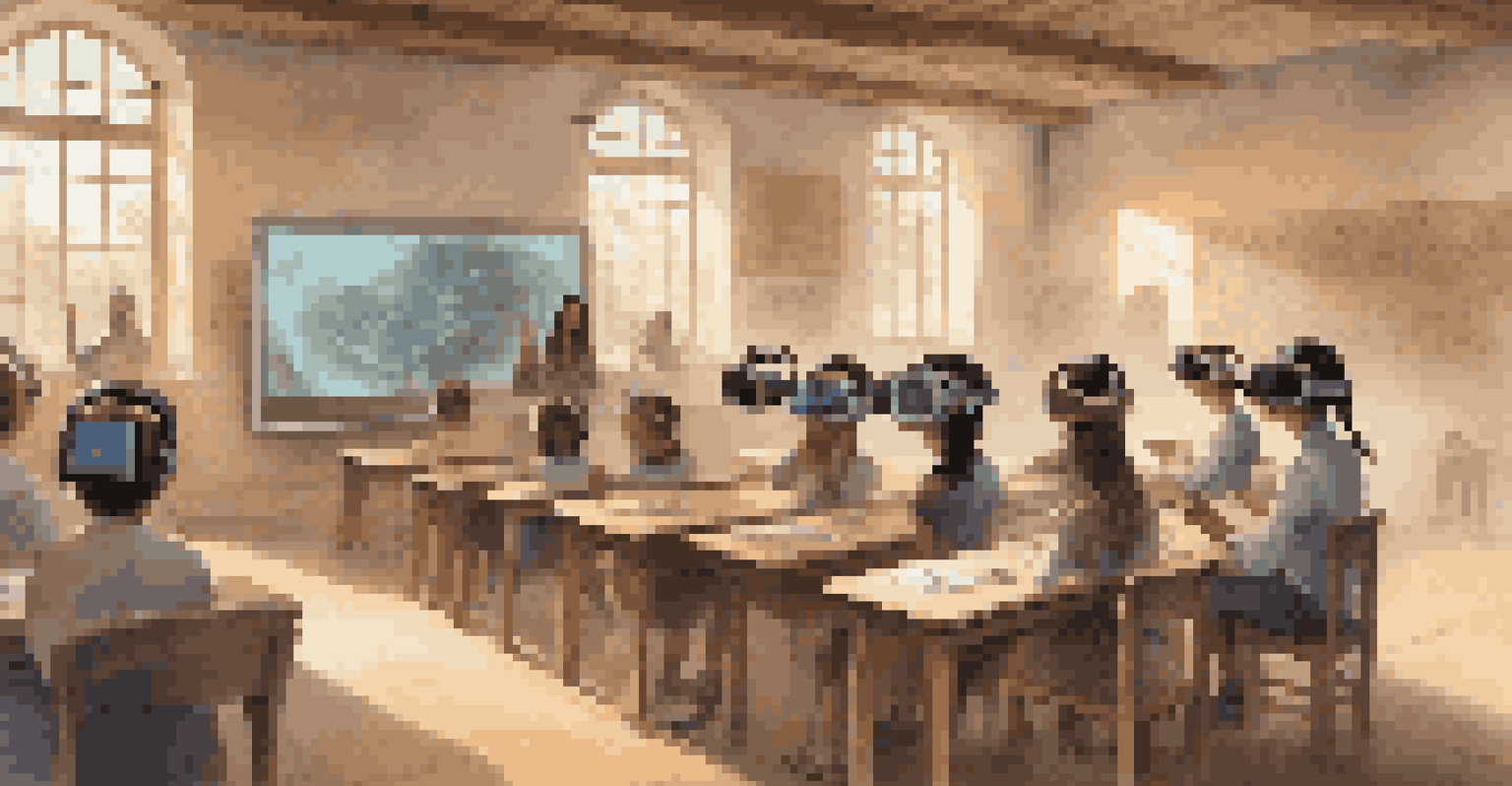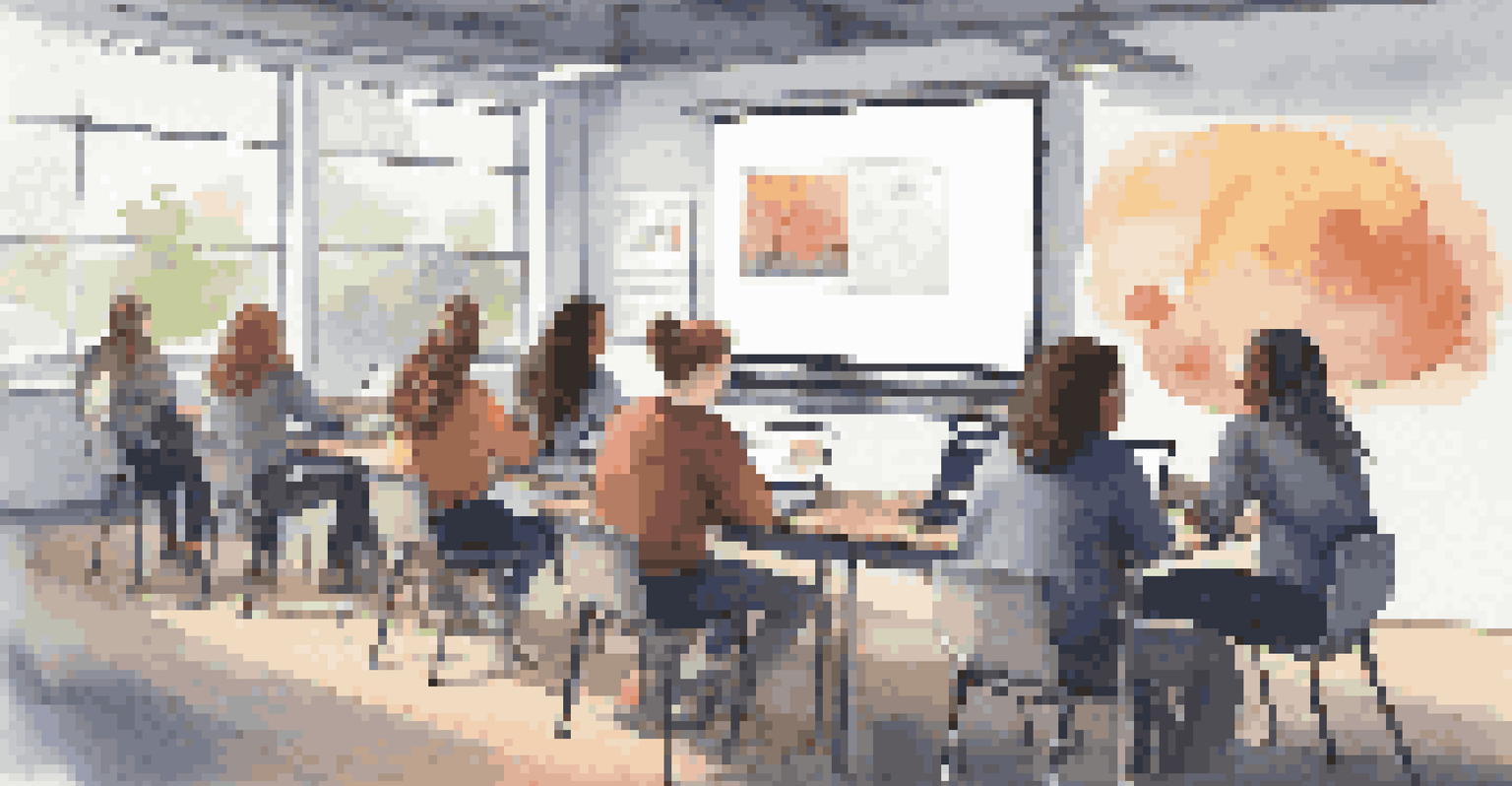Designing Interactive Challenges to Engage Learners in Education

Understanding the Need for Engagement in Education
Engagement is crucial in education, as it directly impacts learning outcomes. When students are actively involved, they retain information better and develop a deeper understanding of the material. However, traditional teaching methods often fall short in capturing students' attention, leading to disengagement.
Engagement is the key to unlocking a student's potential.
For instance, think about a lecture where students are passively listening. In contrast, an interactive challenge invites them to participate, fostering a sense of ownership over their learning. This shift not only enhances motivation but also encourages collaboration among learners.
By recognizing the importance of engagement, educators can explore innovative methods, such as interactive challenges, that transform the classroom experience. These challenges can be designed to cater to diverse learning styles, ensuring that every student has the opportunity to thrive.
What Are Interactive Challenges in Education?
Interactive challenges are activities that require students to actively participate in problem-solving or creative tasks. These can include quizzes, group projects, or gamified lessons that push learners to think critically and work together. The key is that they engage students in a way that fosters collaboration and creativity.

Imagine a science class where students create their own experiments instead of just reading about them. This hands-on approach makes learning more relevant and exciting. The thrill of overcoming obstacles in these challenges can lead to a deeper understanding of the subject matter.
Engagement Boosts Learning Outcomes
Active participation in education enhances information retention and understanding.
Ultimately, interactive challenges transform the educational landscape by promoting active learning. They encourage students to take initiative, ask questions, and explore topics more deeply, which can lead to lasting knowledge retention.
Benefits of Interactive Challenges for Students
One major benefit of interactive challenges is the boost in student motivation. When students are engaged in tasks that are fun and relevant, they're more likely to invest effort and time into their learning. This increased motivation can result in a more positive attitude towards education overall.
The future belongs to those who believe in the beauty of their dreams.
Furthermore, these challenges often enhance critical thinking and problem-solving skills. For example, when students face a complex problem, they must analyze information, evaluate options, and develop solutions collaboratively. This process not only strengthens their cognitive skills but also prepares them for real-world scenarios.
Additionally, interactive challenges promote social skills as students work together. They learn to communicate effectively, share ideas, and respect differing viewpoints, which are all essential skills in today’s interconnected world.
Designing Effective Interactive Challenges
To design effective interactive challenges, educators should start by identifying learning objectives. These objectives guide the creation of challenges that are not only engaging but also aligned with educational goals. For instance, a challenge might focus on teamwork while teaching specific content.
Next, consider the interests and skill levels of the students. A challenge that resonates with their passions will spark more enthusiasm and participation. Incorporating technology, such as apps or online platforms, can also enhance the interactive experience.
Interactive Challenges Foster Skills
These challenges develop critical thinking, problem-solving, and social skills among students.
Finally, it's important to encourage reflection after the challenge. This allows students to assess what they learned and how they worked as a team. Reflection deepens understanding and reinforces the lessons learned during the activity.
Incorporating Technology in Interactive Challenges
Technology plays a pivotal role in enhancing interactive challenges. Tools like interactive whiteboards, educational apps, and virtual reality can create immersive experiences that captivate students. For example, a history class might use VR to take students on a virtual tour of ancient civilizations.
Additionally, online collaboration platforms allow students to work together, even from different locations. This flexibility can lead to richer discussions and more diverse ideas. Imagine students collaborating on a project with peers from around the world; the learning potential is limitless!
Moreover, technology can provide instant feedback, which is crucial for learning. When students receive immediate responses during challenges, they can adjust their strategies and improve their understanding in real-time.
Assessment Strategies for Interactive Challenges
Assessing interactive challenges can differ significantly from traditional assessments. Instead of standardized tests, educators might use rubrics that evaluate collaboration, creativity, and critical thinking. This comprehensive approach captures a fuller picture of student learning.
For example, during a group project, teachers can assess not only the final product but also the group dynamics and individual contributions. This encourages students to take their roles seriously, knowing that their efforts will be recognized.
Technology Enhances Learning Experience
Incorporating technology in interactive challenges creates immersive and engaging learning environments.
Furthermore, self-assessment can empower learners to reflect on their performance and set goals for improvement. By fostering a growth mindset, students become more invested in their learning journey.
The Future of Interactive Learning in Education
As education continues to evolve, interactive challenges are likely to play an increasingly significant role. With advancements in technology and a growing understanding of diverse learning styles, the potential for creative and engaging learning experiences is limitless. Educators are beginning to see the positive impacts of these methods on student engagement and success.
Imagine classrooms where learning is driven by curiosity and creativity, with students eager to tackle challenges head-on. This vision is becoming a reality as more educators embrace interactive approaches to teaching. The shift from traditional lectures to interactive challenges can create a vibrant learning environment filled with energy and excitement.

Ultimately, the future of education may well depend on our ability to engage learners through innovative and interactive methods. By designing challenges that resonate with students, we can nurture a generation of thinkers, creators, and problem solvers, ready to tackle the complexities of the world around them.